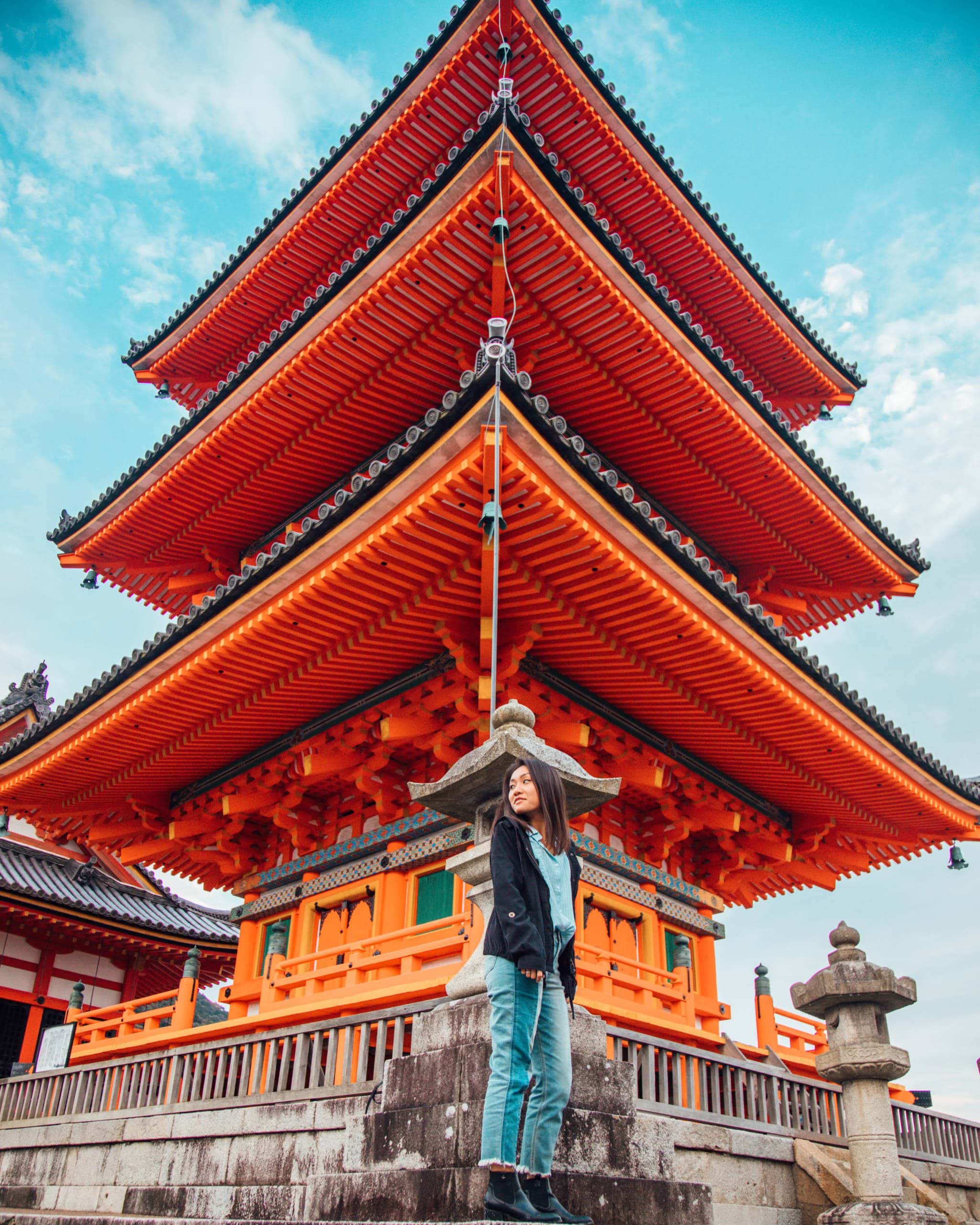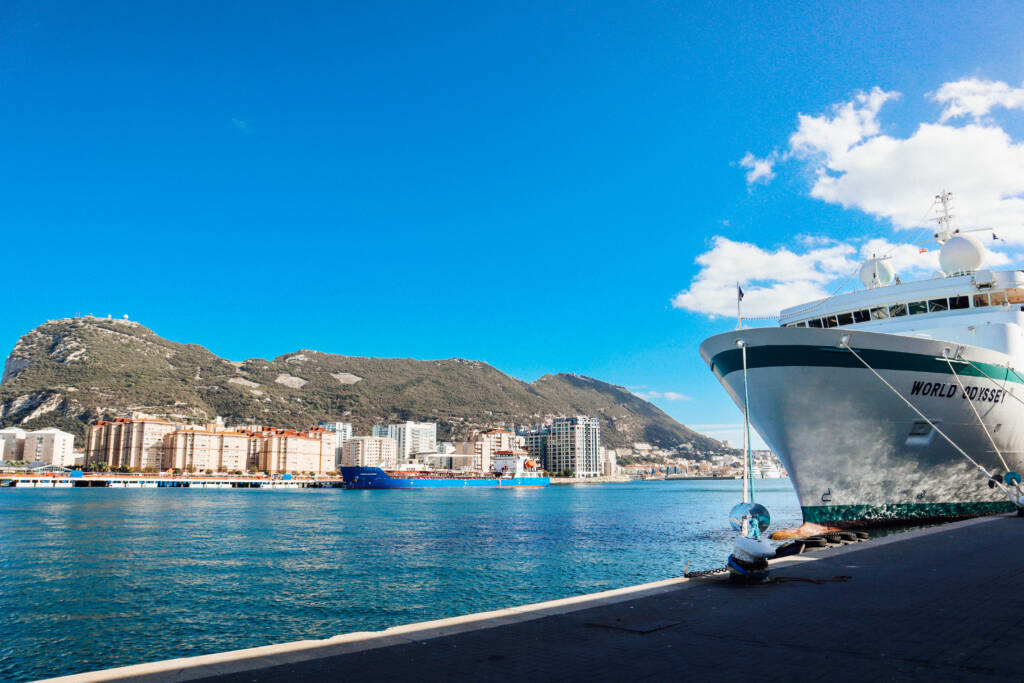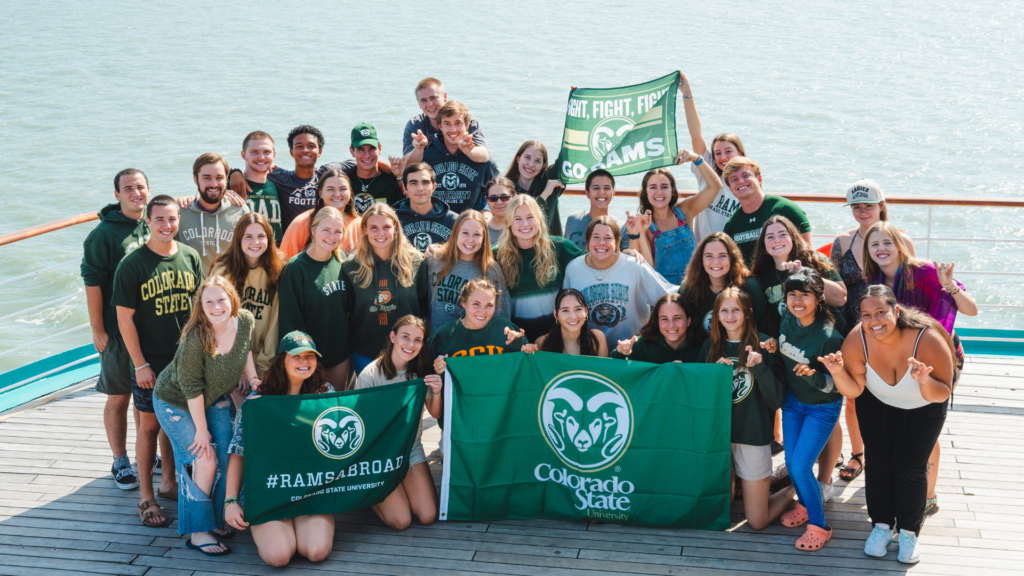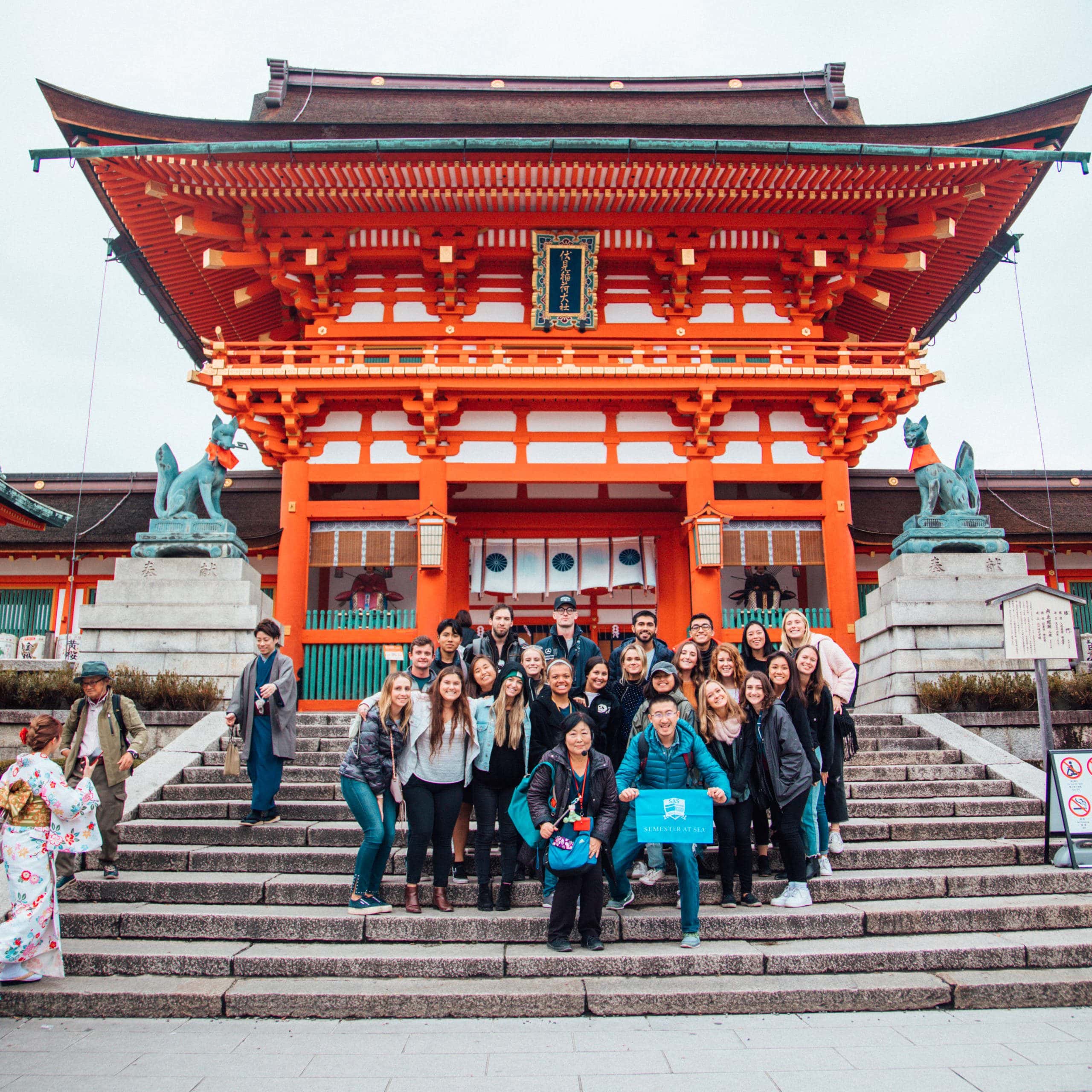
Kyoto: a picturesque city approximately an hour and a half away from the port of Kobe and home to 1,600 Buddhist and Shinto temples. There was no better location to host Fall 2018 Voyagers than Kyoto, where Philosophy and Religious Studies Professor Dr. Kaiqi Hua led a day-long visit focused on the ‘Meaning and Truth in Religion.’ The field class dove into religious methods of communication, including language, text, behavior, and material items, which make religions transformable and understandable.
“As we read religious texts and doctrines, people who did not study religion often think everything is standardized. But most religions today are very flexible because they are a human product, so it’s easy to be modified, recreated, reused, recycled, and embodied into other forms that are beneficial to a society or harmful to human civilization,” said Dr. Hua.
The day began at the Giouji temple, known for its quiet beauty, moss gardens, and bamboo forests. After three months of traveling, some students felt nostalgic seeing the autumn scenery and experiencing their first real season since the start of the voyage.
“The Giouji Temple was definitely the most beautiful to me. It reminded me so much of Oregon in the fall so it definitely pulled at some heartstrings,” said Olivia Szymanski, a senior at the University of Oregon.
The next stop on the field class was the Golden Pavilion, a Buddhist Temple where voyagers witnessed how other cultures and religions impact Japanese practices.
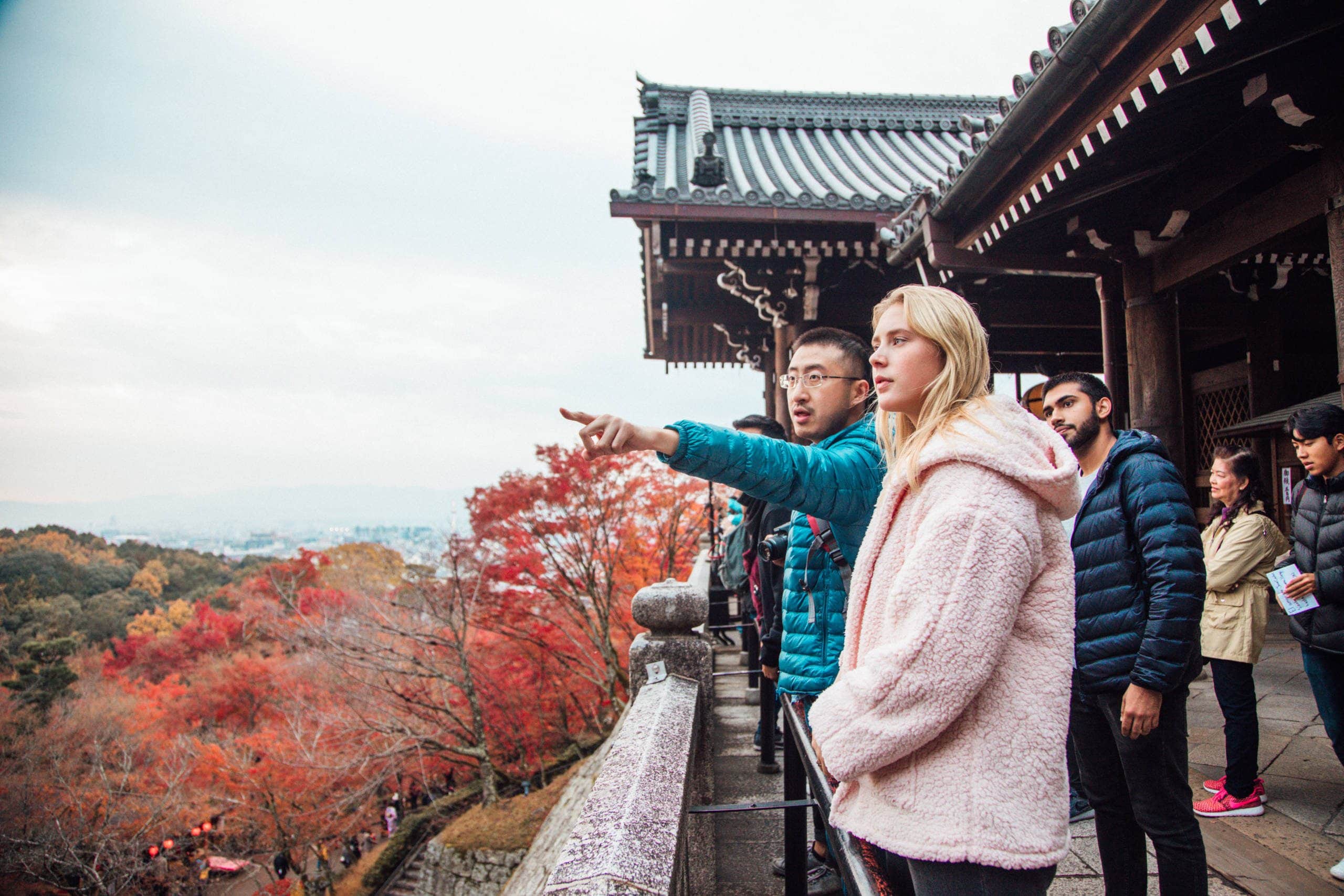
“What I like about Japanese religion is flexibility. Japanese people do not stick to one religion, so there’s a foundation to accept other religions, sometimes in a unique way,” said Tomoko Yoshihara, the Japanese tour guide for the field class. “For example, Christmas is a day for kids to have presents, and Halloween is a day for cosplay. Many Japanese couples want to have weddings in a Christian church. [And Christmas] is a good business here, especially for chocolate-makers.”
The day ended by comparing a Shinto Shrine to a Buddhist Temple. To demonstrate these differences, the field class first stopped at the Shinto Fushimi Inari Shrine to discuss its meaning as a sacred space. Students walked through the famous path of torii (gates), which means ‘the way from mundane to sacred.’
“Japan has two main religions and almost all [Japanese people] use both of them. So we sometimes go to the Shinto shrine to remove bad luck, or be blessed or luckier,” Yoshihara said. “But when we get stressed, usually people go to the Buddhist temples to release that stress with meditation or concentration or coping.”
Serving as a comparison to the Shinto Shrine, the final stop was the Buddhist Kiyomizu Temple, which overlooks the entire city of Kyoto. Near the temple, voyagers walked through numerous shops of the hillside Sannen-zaka district to observe how material objects, even souvenirs, play a part in religions around the world.
“[With materials], religion becomes something tangible to what would otherwise be deep in history and vague. So I think my field class is Japan offered more of a vivid picture of the current status of religion in East Asia,” Dr. Hua said.
Visiting temples in Japan helped explain how ideas of “truth” changed through different times and traditions, and some of the methods through which they changed.
Learning about East Asian religions was eye-opening for many Fall Voyagers, who previously interactions had come through pop culture and tourism. Szymanski believes that understanding the origins of zen, meditation, and yoga is important for students to consider when contemplating their own religions. By studying religion and viewing the contrasts in Japanese religious culture, Fall Voyagers were able to understand the inseparable, deep-rooted influence that daily religious life has on a place and people.
“Understanding different culture and religions give you an insight into the people and the places that you’re visiting. By having that understanding, you can get on the same level of the people and understand where they’re coming from to the point where there’s less difference between the two of you,” Szymanski said.
